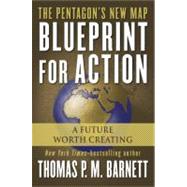
Note: Supplemental materials are not guaranteed with Rental or Used book purchases.
Purchase Benefits
| Preface: A Future Worth Creating | xi | ||
| Glossary of Key Terms from The Pentagon's New Map | xv | ||
| 1. WHAT THE WORLD NEEDS NOW | 1 | (70) | |
|
|||
|
|||
|
|||
| 2. WINNING THE WAR THROUGH CONNECTEDNESS | 71 | (64) | |
|
|||
|
|||
| 3. GROWING THE CORE BY SECURING THE EAST | 135 | (68) | |
|
|||
|
|||
|
|||
| 4. SHRINKING THE GAP BY ENDING DISCONNECTEDNESS | 203 | (62) | |
|
|||
|
|||
|
|||
| 5. WE HAVE MET THE ENEMY | 265 | (56) | |
|
|||
|
|||
|
|||
| CONCLUSION: HEROES YET DISCOVERED | 321 | (20) | |
| AFTERWORD: BLOGGING THE FUTURE | 341 | (22) | |
| Acknowledgments | 363 | (4) | |
| Notes | 367 | (62) | |
| Index | 429 |
The New copy of this book will include any supplemental materials advertised. Please check the title of the book to determine if it should include any access cards, study guides, lab manuals, CDs, etc.
The Used, Rental and eBook copies of this book are not guaranteed to include any supplemental materials. Typically, only the book itself is included. This is true even if the title states it includes any access cards, study guides, lab manuals, CDs, etc.